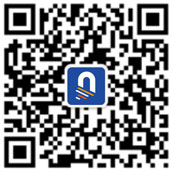Journalist / Gitana
Global problems require global solutions. An obvious statement you might have seen on billboards, at events and in commercials selling products that may have nothing to do with that sentiment. Yet, it holds true. The 2008 financial crisis made it clear that economic problems are no longer bounded by nation-state borders.
International trade will not suddenly stop, neither will the growth of technology. We are far too dependent on both to simply push them aside. Doing so would cause more harm than good. Access to goods from different countries and access to cross border communication tools, like the internet, are not the root of the issue either.
One of the key problems is how goods are produced and delivered and the lack of power consumers have to access information at each stage of the supply chain until the product reaches them. We buy what we need without questioning where it comes from. It is not until a disaster occurs, a potential scam, or goods need to be recalled — whether its meat from the US or milk in China — that people begin to wonder, how can I protect myself against these fears?

The Supply Chain. *Image courtesy of Southwest Tech
Story About a Box
This is not an issue for the consumer alone but also, small and medium enterprises and multinational corporations involved in the production and shipping of goods. I spoke with Sami Alshorafa, Vice Chairman of Farm Food for Food Industries, a family owned company that supports small farmers in Egypt to deliver their fruits and vegetables worldwide, to get an idea of the challenges small businesses face in their day to day shipping operations.
Alshorafa receives fresh products from farmers, packages and freezes them in their factory and then ships them abroad. One of the challenges he spoke about is dealing with “new requirements that arise from country of destination which need to be accommodated. These types of challenges can be costly and time-consuming”. Here is where blockchain technology can offer solutions.
But first to really understand the revolutionary benefits of blockchain, I need to tell you a story. A story about a box. A metal box with padlocks — the shipping container.
The shipping container became the standard method of shipping worldwide after it was utilized during the Vietnam War in the 1960’s. During wartime trying to ship and unload an incredibly large amount of civilian and military cargo onto one functioning port was nearly impossible. Ships could not reach the piers because of shallow waters. Instead, workers had to use make-shift methods, a few small cranes and physical labor working around the clock to carry nets of loose equipment to shore. It took anywhere from ten to thirty days to make a single roundtrip. This is the story that author and economist Marc Levinson tells in his book The Box, “cargo often sat for days on the dock. Military recipients often did not know that they had freight coming”.
Levinson retells Malcom McLean’s experience as a trucker from North Carolina who came up with the idea of containerization in the 1950s. McLean saw that not only did shippers need large containers without wheels to move from truck to ship to port but that “an entire new way of handling freight [was required]. Every part of the system — ports, ships, cranes, storage facilities, trucks, trains, and the operations of the shippers themselves — would have to change”. McLean recognized that the shipping container alone would not change the way supply chains were managed, but that a unified system needed to be developed utilizing the container in order for the chain to function efficiently. After the shipping bottleneck at Vietnam and the introduction of McLeans cost and time saving solution, the shipping container became the standard for global trade today.
What’s interesting about this story is how recent this innovation occurred and how we singularly rely on the system he created for global trade today. It was not the box itself that changed the way we trade but the system enabling the box to efficiently traverse the world that revolutionized global trade. This is exactly what blockchain technology can do, digitizing the supply chain and logistics industry to bring transparency, accountability and efficiency.
Blockchain Brings Logistics Revolution
With the world’s population expected to reach 9.3 billion by 2050, consumption and production rates have massively increased. Consumer spending has increased four-fold since the 1960’s. Asia, specifically China is at the epicenter of today’s global economy as the worlds number one producer of goods and services.
More people and more goods leads us back to the problem that was faced in the 1960s, ensuring the safe and efficient shipment of supplies from the factory to the consumer. How can blockchain technology solve this problem?
Stick with me, I’ll break it down. Blockchain technology is a type of Peer to Peer distributed ledger technology that is layered on top of the internet, which means the ledger is online. The way this distributed ledger is built (coded) means that none of the information in the ledger can be altered. Information is placed into digital spaces known as blocks. The ledger cannot be altered because each block of information is connected to the one before it. Every block on the chain contains a piece of information from the previous block. Therefore the ledger can always be held accountable to itself. If a change is made, that modification can be seen by all participants on the chain. The ledger is distributed or decentralized among several nodes (computers) to provide security so that the information is not in one central server leaving the chain open to a single point of failure or attack.
It is Peer to Peer in the sense that no middleman is necessary for a transaction to take place. If person A wants to send information to person B it does not need to go through a centralized service, such as a central bank. This is why the first use case of blockchain was Bitcoin, a digital cryptographically secure currency that can be used without a central bank. To recap, blockchain is a technology that is secure, decentralized, immutable and transparent. Anyone can go online and see the transactions that take place. If you stuck with me till the end of this paragraph you deserve a dogecoin. If you do not know what that is google it, its worth more than you think.
Now, imagine how that technology can be used to make supply chain management and logistics more secure? Imagine what this can do for the consumer? Think about it, large shipping companies like Maersk and small producers can use this technology to monitor and manage all the paper work involved in the supply chain — bill of lading, insurance, permits — so that shipping can run smoothly. Instead of shipments arriving at a dock, and dockworkers needing to go through all their paperwork to ensure payments have been made and information is accurate, the information would go on a blockchain. Then, at every point along the supply chain the receiver can simply access the blockchain to verify information. If a break in the supply chain occurs it would be easier to investigate and locate the source of an issue.

A few of the many track and trace blockchain projects out in the market.
What about the consumer? They would have access to information about the quality of the product, whether the product was shipped under the right temperatures and if the product truly came from where it claims to originate from.
This innovation would put both producers and consumers on check, developing greater trust between the two. Building a more sustainable and accountable process leading to less fraud, corruption and energy consumption whilst importing and exporting products from farm to market.
I caught up with Nicolas Krapels aka Prof. K, professor of finance at East China Normal University and head of China business development at DarcMatter, after he gave a talk at the Shanghai World Financial Center about blockchain for logistics and supply chain.
He said that this topic is important to teach as a valuable use case of blockchain technology. He gave the example of China’s One Belt One Road (OBOR) initiative currently underway. OBOR is a project that plans to revive the ancient Silk Road trade routes by developing ports all over Southeast Asia.
“it is important to think about how we can build those ports in the modern era. Sixty years ago trade was containerized, and since then we have had only incremental improvements to that system. If we are going to dedicate billions of dollars building ports on the maritime silk road, I think it would be great to integrate blockchain into those developments”. Nicolas said.
Given this, it is important to remember that just like any new technology blockchain is not the deus ex machina and is still in its early days. There are challenges and plenty of room for discussion. For now, given the accelerated rate of production and consumption, there are clear benefits to consider using blockchain in this arena.
It is not the time to fear technology. It is time to learn how to better use it to improve the systems we rely on today to build greater trust and security between individuals, societies and businesses that systemically connect us all.









